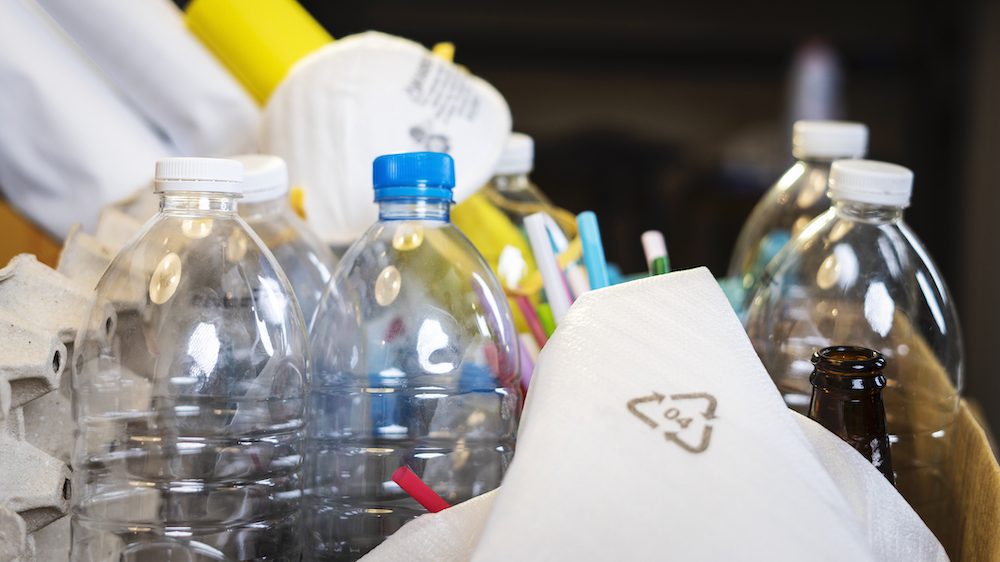
krisanapong detraphiphat/Getty Images
We all know that the triangle symbol (♻) on the bottom of plastic bottles means to recycle. But what do the numbers inside the triangle mean? The recycling numbers range from 1 to 7 and stand for different types of plastic.
“It’s not uncommon to see a recycling symbol on a plastic container and think it’s OK to toss it into the recycling bin,” says Sheryl Ryan, founder of Greenopedia. “But as it turns out, there are several different types of plastic, and some are easier for recycling centers to process than others.”
Also known as the resin identification code, or RIC, each number imprinted on a plastic product indicates the type of plastic resin that product is made with. The code does not mean the item is made from recycled plastic or that the plastic is recyclable in your area.
“For decades, consumers have looked at recycling symbols on plastic products—and the numbers inside—as a promise that their packaging can and will be recycled,” says Matt Littlejohn, senior vice president for strategic initiatives at Oceana, a nonprofit ocean conservation organization. “Unfortunately, this promise is a hollow one as most plastic products, except for those with Nos. 1 and 2, are rarely actually recycled.”
Why recycling numbers matter
Different cities and towns accept different types of plastics for recycling. For example, San Diego may accept No. 5 plastics, but Phoenix may not. So it’s best to find out what is acceptable in your municipality before tossing any ol’ plastic into your blue bin.
To help you understand the different categories, here’s a breakdown of those tiny numbers.
No. 1: Polyethylene terephthalate (PETE / PET)
This number represents the most commonly recycled plastic, which is lightweight and easy to recycle. It is used for soft drink bottles, peanut butter jars, salad dressing bottles, plastic liquor bottles, mineral water containers, fruit juice containers, and cooking oil containers. It’s accepted by most curbside recycling programs and can be recycled to make items like egg cartons, containers, carpet, and more.
No. 2: High-density polyethylene (HDPE)
Plastics with this number are also picked up by most curbside programs and can be recycled into many kinds of goods. This type of plastic is found in milk jugs, laundry detergent bottles, household cleaner bottles, motor oil bottles, and juice bottles. These can then be recycled into items such as flower pots, toys, traffic cones, and trash cans.
No. 3: Polyvinyl chloride (PVC)
This type of plastic is not commonly recycled and is used to make everything from shower curtains to garden hoses. PVC can rarely be recycled, but it is accepted by some plastic lumber makers.
“As technology improves, recycling centers are beginning to accept plastics that they weren’t able to process in the past. But we still have to help them out,” says Ryan. “Thankfully, it only takes a second to Google ‘which plastic codes does my recycling center accept’ to decide which items [you] can or cannot throw into your recycling bin.”
No. 4: Low-density polyethylene (LDPE)
LDPE items are not commonly recycled and are used to make cellophane wrap, produce bags, disposable diaper liners, and squeezable condiment bottles. Experts recommend recyclers take time to understand what items are recyclable.
“When people toss stuff in the recycling bin that is not actually recyclable—think plastic bags, hoses, diapers, most mixed-material packaging—it adds costs to the system because the nonrecyclables must be sorted out,” says Lance Klug, public information officer for CalRecycle, the agency that oversees recycling in California.
No. 5: Polypropylene (PP)
This plastic is not commonly recycled and is used to make packaging pipes and tubes, medicine bottles, bottle caps, and straws.
No. 6: Polystyrene (PS)
Otherwise known as Styrofoam, PS is used to make everything from hot beverage cups, take-out food containers, and packaging peanuts. It is recycled in some areas and used to make similar products like plastic wood, insulation, and hard-plastic pens.
No. 7: ‘Other’
This number designates a miscellaneous category for all other plastic resins like acrylic or nylon. The most common types of No. 7 plastic include bottles, headlight lenses, and safety shields.
The post Can You Recycle That? Here’s What the Recycling Numbers on Plastic Mean appeared first on Real Estate News & Insights | realtor.com®.
No comments:
Post a Comment